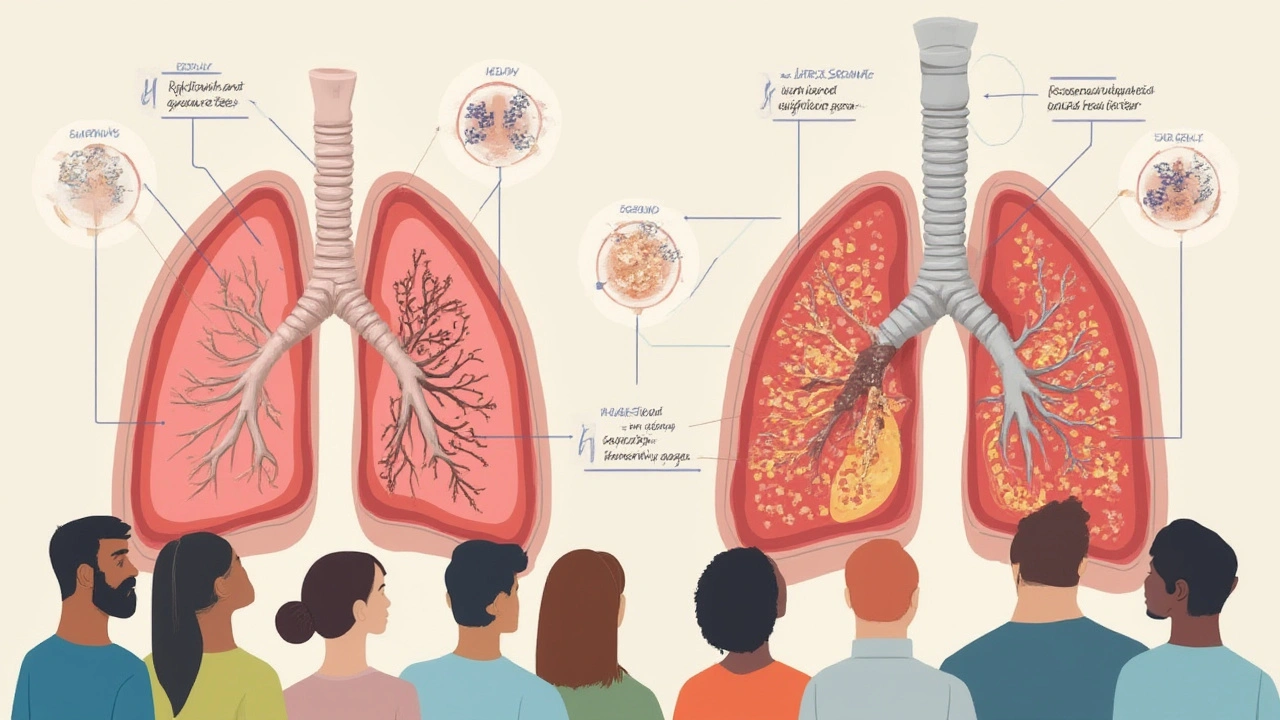Lung Health: Practical Tips and Trusted Resources
Your lungs work nonstop, yet most of us barely think about keeping them in shape. Whether you’re dealing with a diagnosis like COPD or just want to breathe easier on a daily basis, there are easy steps you can add to your routine. Below you’ll find straight‑forward advice and links to our most helpful articles, all written in plain language you can act on right now.
Managing Common Lung Conditions
When obstructive lung disease shows up, symptoms such as shortness of breath, wheezing, and fatigue can take over your day. Our article “COPD and Quality of Life: What Hurts, What Helps, and What to Do” breaks down the biggest pain points and offers a checklist you can start using today. Key actions include learning proper inhaler technique, joining a pulmonary rehab program, and keeping a symptom diary to spot triggers early.
If you ever suspect an overdose of a medication that can affect breathing, like ornidazole, the guide “Ornidazole Overdose: Symptoms, What To Do, and Treatment Guide” tells you exactly what signs to watch for and when to call emergency services. Quick recognition can save lives and prevent lasting lung damage.
Everyday Habits for Stronger Lungs
Simple lifestyle tweaks can boost lung capacity without a prescription. Start with controlled breathing exercises—inhale through the nose for four counts, hold for seven, exhale slowly for eight. Doing this twice a day improves oxygen exchange and reduces anxiety that often worsens breathlessness.
Staying active is crucial. Even a 20‑minute brisk walk each day strengthens the muscles that support breathing. If you have COPD, pacing yourself and using a “talk test” (being able to speak a sentence without gasping) helps you avoid overexertion.
Air quality matters, too. Keep windows closed on high‑pollution days, use HEPA filters indoors, and avoid smoking or secondhand smoke. If you’re in a region with frequent wildfires, a mask rated N95 can filter out harmful particles and keep your airways clear.
Nutrition supports lung repair. Foods rich in antioxidants—berries, leafy greens, and fatty fish—combat inflammation that can worsen chronic lung conditions. Pairing these foods with adequate hydration keeps mucus thin and easier to clear.
Finally, schedule regular check‑ups. Pulmonary function tests (PFTs) give your doctor a clear picture of lung performance, allowing early adjustments to medication or therapy. If you’re on inhalers, ask your pharmacist to demonstrate the proper technique each visit.
At Adwayet Health, we keep updating our database with evidence‑based resources. Bookmark the tag page for “lung health” and return whenever you need a fresh tip, a new article, or a quick reference guide. Your lungs deserve the same attention you give to any other part of your body—so start today, and feel the difference in every breath.
-
Pulmonary Tuberculosis Stages: Symptoms, Progression & Recovery Explained
Explore the stages of pulmonary tuberculosis, how it impacts the lungs, warning signs to watch for, and options for treatment and recovery in plain language.
